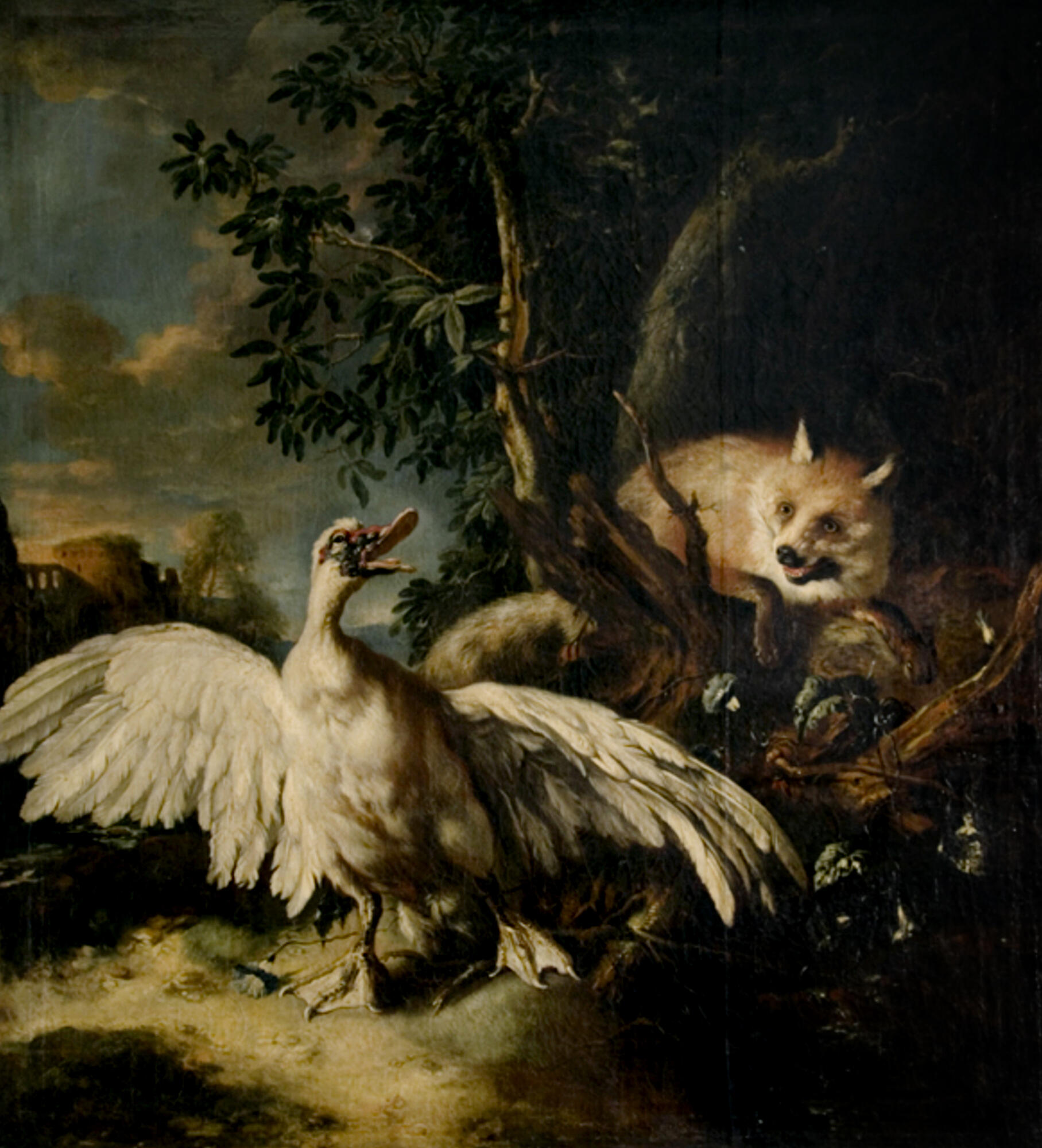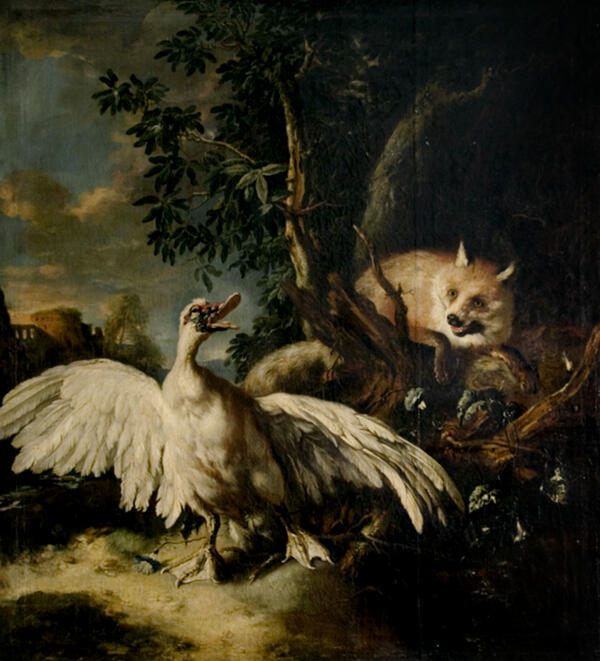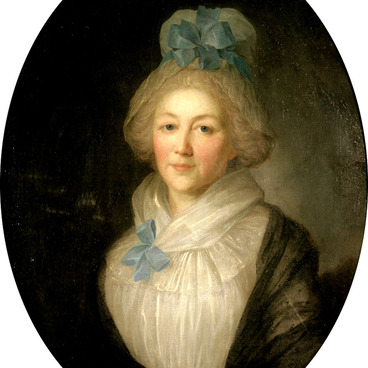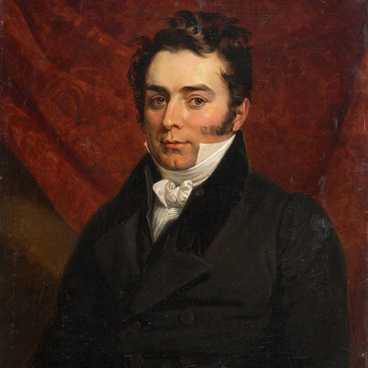The painting ‘Fox with a duck’ belongs to the genre of a hunting still life, which appeared in Russia in the 18th century. Despite the long-standing passion of the Russian tsars for hunting, such a still life became part of the court culture only in the time of Elizabeth Petrovna. The Empress launched an active construction of hunting pavilions and tents, and tried to decorate them in the European way by introducing hunting paintings. This specific genre became familiar to the Russian audience after the arrival of the famous German animal painter Johann Grooth (1717-1801). Grooth created excellent examples of hunting still life, worked at the Imperial Art Academy, and raised a whole generation of Russian painters who successfully created in this genre.
The hunting still life had a typology. Some of them represented hunting trophies: game, resting hunting dogs and attributes such as a gun, a bag, or a hunting horn. Others depicted live animals and birds in their natural surroundings. Peaceful scenes were combined with the scenes of attacks or animal fights. Both types of hunting still life required the artist to have excellent knowledge of the anatomy of animals and their habits, as well as the capacity to convey nature truthfully.
The information about the artist of the painting Piotr Kamenev is so limited, that it is impossible to have a clear idea of his life and work. The documents confirm he was a student of Grooth in his academic workshop ‘animals and birds’ from 1770 to 1785. It is also known about several other paintings belonging to his authorship. Presumably, Kamenev painted ‘Fox with a duck’ during his studies at the Academy under the guidance of his teacher. The young artist perfectly understood the peculiarities of this genre, building meticulously the composition of the scene. He forms the anatomical frame of animals professionally, and masterly conveys a variety of textures such as bird plumage and fox fur.
The hunting still life had a typology. Some of them represented hunting trophies: game, resting hunting dogs and attributes such as a gun, a bag, or a hunting horn. Others depicted live animals and birds in their natural surroundings. Peaceful scenes were combined with the scenes of attacks or animal fights. Both types of hunting still life required the artist to have excellent knowledge of the anatomy of animals and their habits, as well as the capacity to convey nature truthfully.
The information about the artist of the painting Piotr Kamenev is so limited, that it is impossible to have a clear idea of his life and work. The documents confirm he was a student of Grooth in his academic workshop ‘animals and birds’ from 1770 to 1785. It is also known about several other paintings belonging to his authorship. Presumably, Kamenev painted ‘Fox with a duck’ during his studies at the Academy under the guidance of his teacher. The young artist perfectly understood the peculiarities of this genre, building meticulously the composition of the scene. He forms the anatomical frame of animals professionally, and masterly conveys a variety of textures such as bird plumage and fox fur.



